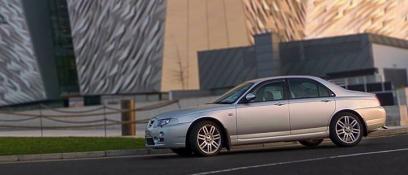
There is no anti fog coating, at least none that I have ever heard or read about. Lenses though are prone to dampness (think mould and fungus). I would always avoid using a filter of any kind on an 'ultra wide' lens for fear of vignetting and flare. 'Ultra wides' are prone to flare as the light waves have more surface area to bounce and reflect off internally. Adding a filter will add another surface. The coatings are designed to help absorb these reflections.
The misting is commonly due to temperature variations. Getting out of the car (warm) and whacking the lens on the camera and setting up outside where there may be as much as 10 or more degrees of difference could cause this misting (the filter especially since it is a large surface area). Letting the camera and lens acclimatise for a few minutes. If I was in this situation, I would remove the filter and extend the lens barrel if using a zoom, or open up the focus to separate the lenses. This lets air circulate around them easier.
With your night shots, drop the ISO down to 400 and try a shutter speed of 16 times what you used for 3200 (or if you cannot wait the 5+ minutes, go to 800 ISO and go with 2.5 minutes). Night sky shots, I would avoid going beyond 800 ISO. Your battery will drain faster and the sensor may get warmer, which may create hotspots, but these will be easier to deal with in post processing than a higher ISO, and with stars, you may not even notice them (although most modern DSLRs will handle that without any issue). This is demonstrated in the silhouette of the trees. The longer shutter exposures too, will generate heat and could cause misting up, but I do not think that will affect things too much.
Looking at the first image, it looks as though there is a light source to the left, which suggests too long an exposure. I reckon you may have been able to get away with 800 ISO at 20 secs. Get a piece of dark card, and if you have a light source leaking into the shot, like that one, hold it to the side of the lens like a shade (but not in view obviously - you are trying to effectively create a shadow over the lens). With an ultra wide lens at 10mm, you will have to experiment a little to avoid it showing in the shot. Hoods have little or no effect.
Hoya used to do thin rimmed filters for these lenses, which will be beneficial. But a 10-20ish lens is one of the lenses I would not use a filter (because of additional flare and vignetting), the other is a dedicated macro lens either - you are adding an element that the rest of the elements were not designed to operate with. Remember, whilst they are designed as such, the primary reason most people have a UV filter on their lens is for protection. Incidentally, do not waste money getting a polarising filter for the ultra wide, especially if you plan to use for landscapes. I cannot remember the physics behind it, but if there is an expanse of sky in the shot and lets face it, an ultra wide is going to be used for mainly landscapes, it will lead to a distortion of the colours and their balance.
__________________
 It is not gloss primer .............. it is duct tape silver!
It is not gloss primer .............. it is duct tape silver!
Last edited by clf; 27th October 2018 at 01:43..
|